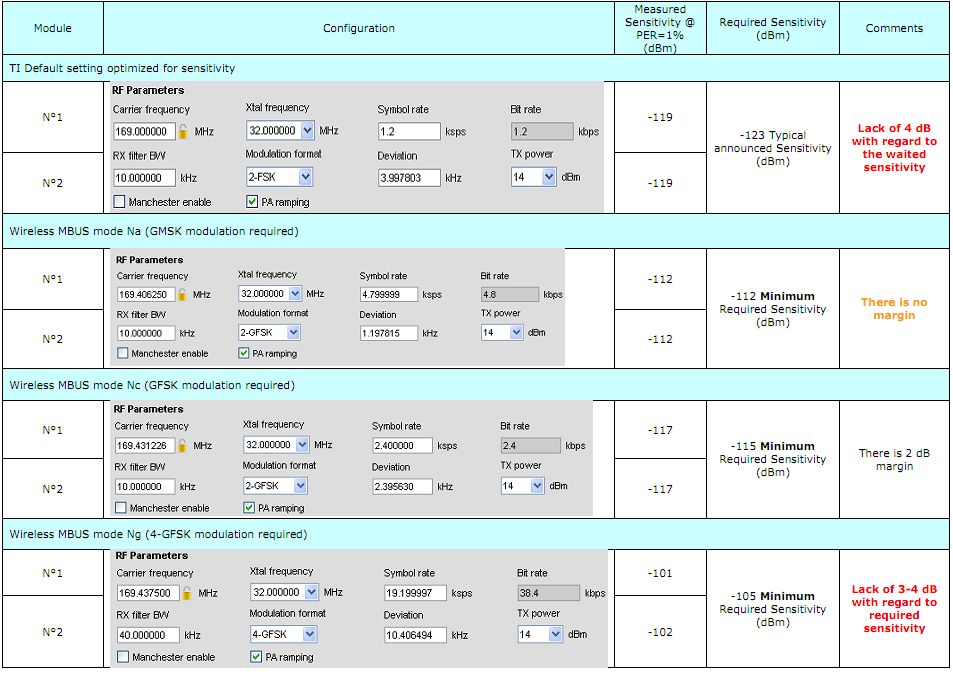Hello,
We are testing CC1120 EVK at 169MHz. We currently have the following performances in sensitivity :
- 1.2kbps 2-FSK : -119dBm
- 4.8kbps GMSK : -112dBm
- 2.4kbps 2-GFSK : -117dBm
- 38.4kbps 4-GFSK : -101dBm
Do you confirm this performances ? It seems that we have 3-4 dB less than announced in datasheet...
Thanks for support. Regards,
Xavier


